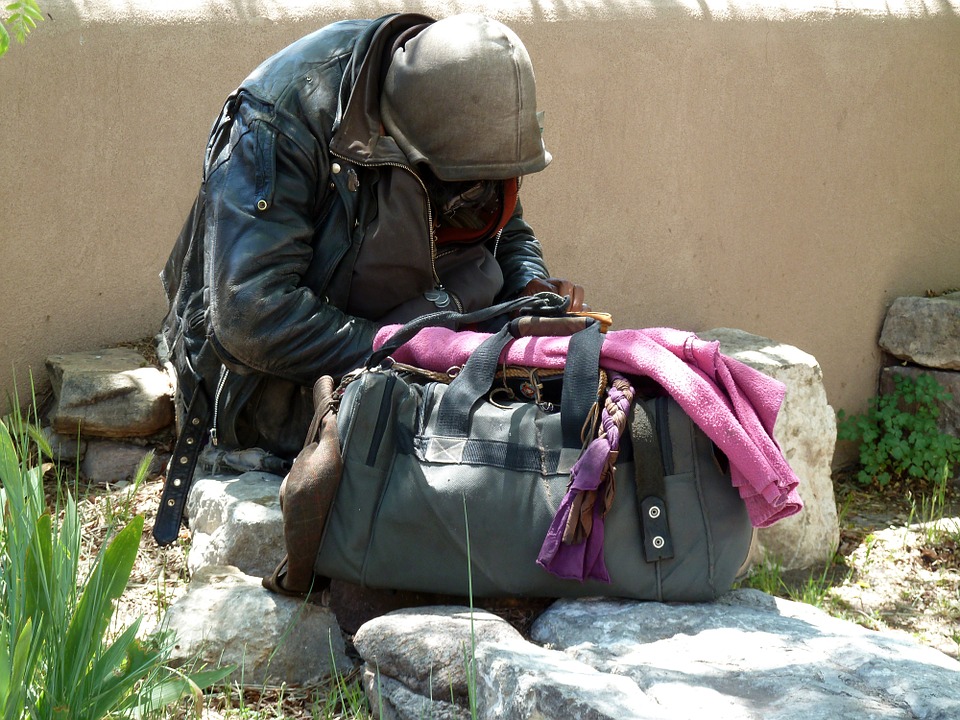(Photo: Pixabay)
The Gryphon discusses the rising issue of homelessness across Europe and what measures could be taken to help resolve it.
On the streets of all the big cities and towns up and down the country, many people are sleeping rough on the streets. Even though many of them are discreet, they are out there. However, for many passers-by, they are quickly out of sight and out of mind. In other cases, people do not know how to handle the situation or are worried about how the person could react. Should you speak to them and ask whether they are alright? Buy them food, a hot drink, or give them money?
The sad reality concerning the prevalence of homelessness in some of the richest and most developed countries in the world, such as the UK, Ireland, Germany and the US, is very disappointing.
To clarify, homelessness does not necessarily mean sleeping rough. It may also include insecure or poor-quality housing and temporary living, such as staying with friends, in a hostel or a night shelter. This type of homelessness is also a massive problem, affecting many people in the UK, and even though they are less visible to the public, their situation must not be ignored.
The Combined Homelessness and Information Network (CHAIN) recently published alarming figures: between July and September this year, a record number of 3103 people were found sleeping rough in London. This is the highest number ever recorded over a three-month period. Why is this happening?
The Minister for Housing and Homelessness, Heather Wheeler, said: “We have set out bold plans backed by £100m to halve rough sleeping by 2022 and end it by 2027, as part of a £1.2bn investment in tackling all forms of homelessness.”
However, St Mungo’s Senior Policy and Public Affairs Officer, Rory Weal, criticises the budget as having missed an opportunity. Although he also stresses that there are some good points, like the new mental health crisis service and the raised money for the NHS, he complains about not having been introduced to specific measures on how the 2027 aim of ending homelessness should be realised.
According to figures from the Guardian in April, the number of homeless people dying on streets or in temporary accommodation has more than doubled over the last five years in the UK, with 230 deaths between 2013 and 2017. On top of these shocking statistics, they stress that this number is highly likely to be an underestimation as there are no overall national statistics.
The European Union also states that the number of people who are homeless has risen in most European countries. The EU’s Social Investment Package (SIP), is supposed to help homeless people “with reintegration into society and work.” In the package, the EU provides guidance on confronting homelessness but, in the end, it lies with the member countries to get homelessness under control, with some help from different EU funds such as the European Social Fund (ESF).
The European Federation of National Organisations Working with the Homeless (FEANTSA), which is supported by the European Commission, is the only major European network dealing exclusively with homelessness. The organisation published a study in March, which reveals some alarming statistics. Germany holds the sad top-spot with a shocking figure of 860,000 people who were thought to be homeless in 2016 – according to the broader definition of homelessness – which marks an estimated increase of 150% between 2014 and 2016. This “can be explained by the inclusion of refugees for the first time in the estimates”, they state. Nevertheless, the numbers excluding refugees still indicate an increase of 25% in these years from 335,000 to 420,000.
In England, there was an even higher increase as the figure rose by 169% since 2010, with 4,751 homeless people sleeping rough on just one night in 2017. According to the charity Crisis, there are almost 160,000 households dealing with homelessness in Great Britain. Clearly, the findings are alarming.
The FEANTSA report also reveals that homeless people in Europe have 30 years shorter life expectancy than the rest of the population if they have spent about ten years of their life being homeless. In Great Britain, the average age of death for a homeless person was 47.
Finland and Norway are the only two European countries, according to the study, that have seen a decrease in the number of homeless people living on the streets. In Finland, there was a 10% reduction in the number of homeless people in 2016 compared to 2013, and in Norway, there was a decline of about 36% between 2012 and 2016.
In these countries, homelessness was not handled as an inevitability, but as a violation of human rights. Decentralised measures could solve, or at least reduce, the problem. The Housing First approach was introduced in 2007 in Finland as permanent housing is seen as the first step in order to get life back on the right track. According to Housing First, the initiative is why there are almost no rough sleepers in Finland anymore.
Homelessness is clearly not inevitable or a necessity if the right action is taken.
The Charity Crisis has set up a plan to bring an end to homelessness. This makes the provision of emergency accommodation crucial, but only as a short-term solution. A housing-led approach is similar to the Finnish model as it follows the principle that everyone should be provided with accommodation. Overall, it should aim to place people into mainstream housing. The charity also have demanded more government action and the building of affordable houses, which will help to protect renters in a climate where owning property is becoming unattainable.
A plan is just a little flicker of light at the end of the tunnel. Action must be taken, and everyone can raise awareness concerning homelessness.
Anna Ehlebracht

